Robotics News
Unite
144

Image Credit: Unite
Artem Sokolov, Founder of Humanoid – Interview Series
- Artem Sokolov, founder of Humanoid, successfully grew a family business to a $1B capitalization and founded a company dedicated to building safe humanoid robots.
- Humanoid, founded in 2024, focuses on developing advanced humanoid robots to enhance human capabilities.
- Humanoid aims to free people from hard work through reliable and versatile humanoid robots designed for real-world applications.
- Artem's inspiration for Humanoid stemmed from his grandparents' challenging work experiences in jewelry manufacturing.
- Humanoid's approach emphasizes practical, market-ready solutions over flashy robotics advancements, targeting pick-and-place tasks initially.
- Artem stresses the importance of ethical development practices in humanoid robotics, focusing on safety, privacy, and transparency.
- Humanoid's AI approach integrates Vision-Language-Action models for versatile knowledge synthesis and real-world applications.
- The company's robotics architecture prioritizes modularity, allowing for quick reconfiguration and cost-effective upgrades in deployment.
- Humanoid's focus on balance, agility, and adaptability in diverse environments involves advanced mechanics and learning-based control strategies.
- As humanoid robots integrate into daily life, societal challenges include defining new regulations, coexistence frameworks, and transforming perspectives on human-robot interactions.
Read Full Article
8 Likes
Unite
90
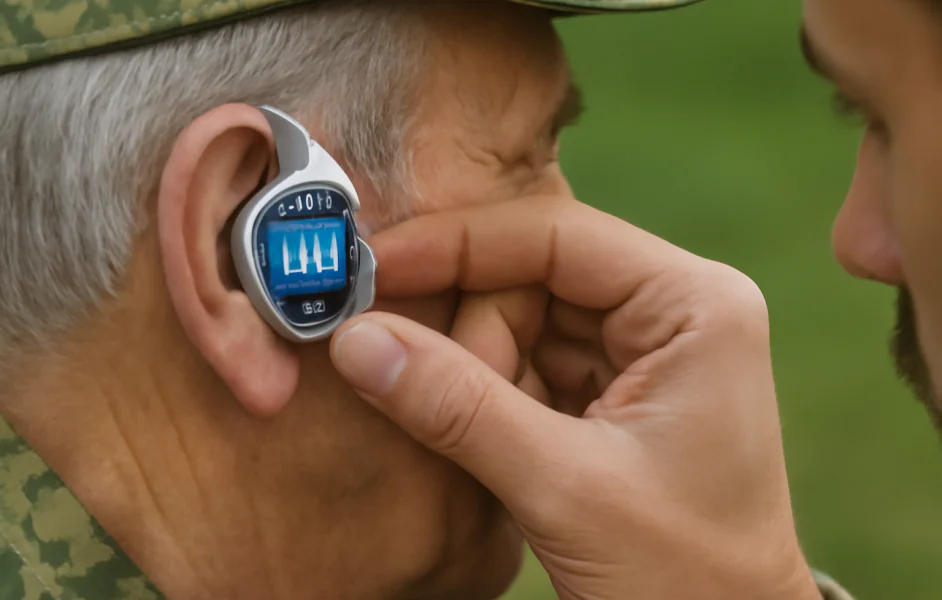
Image Credit: Unite
From Isolation to Inclusion: Empowering Veterans with Smarter Hearing Tech
- Over three and a half million US veterans have government-recognized hearing damage, impacting their communications, psychological health, and ability to return to civilian life.
- New AI-powered hearing technologies are providing innovative solutions for veterans with hearing damage, reshaping access and outcomes emotionally and socially.
- Hearing loss is a prevalent disability among military personnel, affecting many at a young age and leading to challenges in communication and mental health.
- Tinnitus, often associated with hearing damage, causes isolation and depression, compounded by PTSD, making reintegration into civilian life even more challenging.
- Veterans, like civilians, tend to delay seeking treatment for hearing loss due to stigma, visibility concerns, and associations with aging.
- The VA offers support, but faces challenges in providing effective assistance due to bureaucratic red tape, lack of awareness, and stigmas.
- Alternative technologies like AirPods and AI-powered tools are expanding access to discreet, effective, and affordable hearing solutions for veterans and civilians.
- AI innovations, such as captioning tools and real-time transcription, empower users to communicate effectively without disclosing their hearing status.
- Companies like Google, Apple, and Microsoft are leading the way in incorporating accessibility features into everyday tech to improve hearing accessibility.
- Raising awareness and normalizing assistive tech for hearing loss can help veterans regain confidence, independence in communication, and seek timely intervention.
Read Full Article
5 Likes
Unite
94

Image Credit: Unite
If Your AI Is Hallucinating, Don’t Blame the AI
- AI 'hallucinations' are false answers that can occur when AI tools are missing relevant data, not understanding the question, or lacking necessary information.
- Blaming AI for hallucinations in business applications is not valid; instead, the responsibility lies in ensuring AI is fed the right data.
- Generative AI tools like OpenAI's models can hallucinate more when struggling to find suitable answers but can provide valuable results with proper setup.
- To prevent AI from hallucinating, providing it with accurate and relevant data is crucial to keep it on track in delivering meaningful responses.
- Critical thinking should be maintained when using AI tools to validate responses and ensure they align with data.
- AI predicts the next word or number based on probability, with larger language models stringing together sentences using training data.
- AI can fill in gaps when data is missing, leading to humorous or messy outcomes, especially in multi-step tasks where errors can amplify.
- Building AI agents requires structuring data input processes, setting guardrails, and having quality checks to prevent inaccurate results.
- Agents should cite sources, use structured playbooks, and have access to high-quality data to enhance decision-making capabilities.
- Addressing data quality and gathering issues can minimize AI hallucinations and improve the overall performance of AI solutions.
Read Full Article
5 Likes
Unite
180

Image Credit: Unite
Any AI Agent Can Talk. Few Can Be Trusted
- The need for AI agents in healthcare is urgent to alleviate overworked teams and improve patient care efficiency.
- Trust in AI agents in healthcare is crucial and should be based on solid engineering, not just conversational skills.
- AI startups often promote agentic capabilities, but many fail to prove the safety and reliability of their AI agents.
- The reliance on large language models (LLMs) without tailored healthcare training leads to inaccuracies and risks in patient interactions.
- AI agents in healthcare must have response control parameters to ensure accurate and logical answers every time.
- Utilizing specialized knowledge graphs can enable AI agents to provide personalized and accurate information for each patient.
- Robust review systems are essential to evaluate the accuracy and documentation of AI agent interactions with patients.
- A strong security and compliance framework, including adherence to standards like SOC 2 and HIPAA, is crucial for trustworthy AI agent operations.
- Reliable AI infrastructure, backed by stringent security measures and compliance, is necessary in healthcare to ensure trustworthy interactions.
- In healthcare, trust in AI agents is not just about marketing hype but rather about building a solid and secure technological foundation for patient interactions.
Read Full Article
10 Likes
Discover more
Unite
248

Image Credit: Unite
Moments Lab Secures $24 Million to Redefine Video Discovery With Agentic AI
- Moments Lab, an AI company revolutionizing video work, secures $24 million in funding led by Oxx, Orange Ventures, Kadmos, Supernova Invest, and Elaia Partners.
- The investment will fuel U.S. expansion and enhance the development of its agentic AI platform that transforms video archives into searchable and monetizable assets.
- MXT-2, the core of Moments Lab, is a video-understanding AI that describes video content in detail, making it easily searchable and usable across various workflows.
- Agentic AI is introduced as an autonomous system that interprets user intents and takes actions like generating highlight reels based on prompts.
- Moments Lab provides a full-stack platform enabling quick search, clipping, AI video intelligence, metadata-rich discovery, and multilingual support for media professionals.
- Key features include instant clipping, metadata-rich discovery, quote detection, content classification, and translation support.
- Moments Lab caters to TV networks, sports rights holders, ad agencies, and global brands with clients like Thomson Reuters, Amazon Ads, Sinclair, and Hearst.
- MXT-2 is trained on 1.5 billion+ data points, ensuring high confidence outputs and compatibility with various industry-standard tools via API integrations.
- Founded in 2016 by twin brothers Frederic Petitpont and Phil Petitpont, Moments Lab sets out to redefine how creative and editorial teams interact with media.
- Backed by the latest funding, Moments Lab aims to lead the emerging field of agentic AI for video and shape the future of content discovery.
Read Full Article
14 Likes
Siliconangle
293
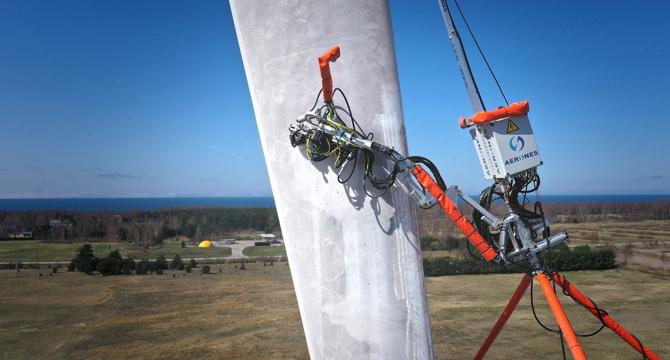
Image Credit: Siliconangle
AI-driven robotic wind turbine maintenance firm Aerones raises $62M
- Latvia-based Aerones Ltd. raises $62 million to expand operations and technology stack.
- Funding round co-led by Activate Capital and S2G Investments, with participation from Carbon Equity and Overlap Holdings.
- Aerones provides robotic tools powered by AI for wind turbine inspection and maintenance globally.
- Company has assisted with retaining clean electricity and reducing carbon dioxide emissions through servicing more than 10,000 turbines annually in over 30 countries.
Read Full Article
17 Likes
The Robot Report
172

Aldebaran, maker of Pepper and Nao robots, put in receivership
- Aldebaran, the producer of Nao and Pepper humanoid robots, filed for bankruptcy in mid-February and laid off much of its staff as it looks for another buyer.
- The bipedal Nao and wheeled Pepper robots were well-known in educational and service applications, but faced financial struggles leading to the receivership.
- Aldebaran's robots, like Nao and Pepper, served as ambassadors of robotics to the general public, but their limited capabilities and commercial applicability affected their market success.
- Ownership changes, including acquisition by SoftBank and URG, and challenges in the production and sales of Pepper and Nao robots have marked Aldebaran's journey in the humanoid robotics industry.
Read Full Article
10 Likes
Arduino
266

Meet Pico: A smart companion robot with vision
- Pico is a shoulder-mounted animatronic robot created by Mateo from the YouTube channel MateoTechLab, inspired by the BD-1 droid from Star Wars.
- It is powered by an Arduino Nano Every board within a custom 3D-printed enclosure, featuring a servo motor for head movement, LED for blinking eyes, and a piezo buzzer for generating sounds.
- Pico has three different modes, allowing it to perform gestures, blink, and generate random sounds. It can be upgraded with an ESP32-CAM module for advanced computer vision capabilities or as a camera.
- To learn more about Pico's development, you can watch Mateo's video on the project and visit the Thingiverse project page.
Read Full Article
16 Likes
Unite
244

Image Credit: Unite
How Apple Lost the AI Race Ahead of WWDC 2025
- Apple is facing challenges with broken promises, delayed features, and underwhelming AI models compared to competitors, risking losing AI-first users.
- Apple's much-hyped Apple Intelligence features have disappointed users, with 73% reporting little to no value and AI models lagging behind in parameters.
- The company's delayed response to the AI technology shift and reliance on competitors for computing power put them at a disadvantage in the AI race.
- Apple's on-device AI models struggle against cloud-based competitors, and their larger AI models perform below the competition.
- Apple's hardware, despite impressive specifications, faces computing limitations due to underinvestment in AI development.
- WWDC 2025 is expected to disappoint as promised AI features like Swift Assist and Siri improvements are delayed or nonexistent.
- Apple's lack of presence in consumer AI assistants and enterprise AI markets, coupled with slower innovation and delayed feature releases, highlights their strategic challenges.
- Competitors like Google, Microsoft, and Meta outpace Apple in AI investment, innovation, and shipping velocity, leaving Apple behind in the AI arms race.
- The risk of losing users to competitors with superior AI features, particularly in tech-savvy and professional demographics, poses a significant threat to Apple's market position.
- Apple's traditional strengths in integrated hardware and software design are being challenged by the importance of data, computing scale, and algorithmic innovation in the AI era.
- With WWDC 2025 likely to showcase Apple's AI shortcomings, the article questions whether users will continue to wait for Apple to catch up in the rapidly evolving AI landscape.
Read Full Article
14 Likes
The Robot Report
19

Cybernetix Ventures raising $100M fund for robotics and physical AI
- Cybernetix Ventures has announced a new $100 million fund to invest in robotics and automation startups with artificial intelligence applications across various industries.
- The fund has already made 23 investments in early-stage companies developing systems for manufacturing, logistics, construction, agriculture, climate, and healthcare.
- Cybernetix Ventures co-founders, Mark Martin and Fady Saad, with 50 years of combined experience in robotics, are actively building an investment portfolio of leading robotics and physical AI startups.
- The global market for AI-enabled robotics is projected to grow significantly by 2030, and Cybernetix Ventures aims to expand its focus to agriculture and climate with the new fund.
Read Full Article
1 Like
The Robot Report
343

Pony.ai partners with Xihu to deploy 1k robotaxis in Shenzhen
- Pony.ai partners with Shenzhen Xihu Corp. to deploy more than 1,000 seventh-generation robotaxis in Shenzhen, China.
- The partnership aims to accelerate large-scale robotaxi deployment using an asset-light and AI-empowered model, integrating autonomous driving with local mobility networks.
- Pony.ai's Virtual Driver technology stack and Xihu Group's fleet expertise will combine to deliver a seamless mobility experience for passengers.
- Pony.ai has recently launched its seventh-generation autonomous driving system and plans to collaborate with more transportation service providers for mass deployment of autonomous mobility.
Read Full Article
20 Likes
Medium
275
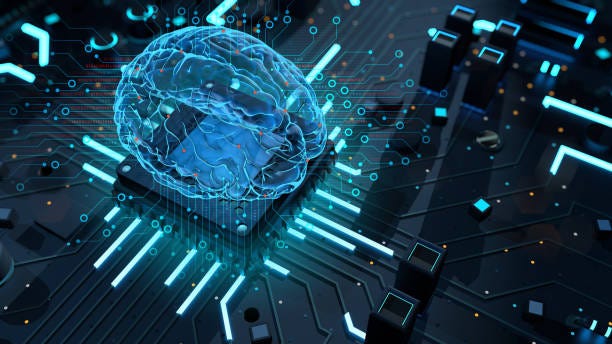
Image Credit: Medium
What If Robots Could Inherit Our Memories?
- The article explores the concept of a memory-preserving chip implanted in the human brain during life that transfers personal memories into a robotic entity after death.
- Brain-computer interfaces have evolved to facilitate memory digitization and cognitive extension, moving beyond medical applications to store memories and emotional patterns.
- The proposed model includes a brain chip for memory recording, adaptive learning of emotional patterns, encrypted storage, and post-mortem transfer to a robotic platform for interaction based on archived memories.
- The idea raises ethical questions about memory continuity, data ownership after death, and the actions of robots based on one's memory, leading to a reevaluation of life, death, and identity.
Read Full Article
16 Likes
Dev
189

Image Credit: Dev
AGV (Automated Guided Vehicle) Multi-sensor Fusion for Real-time Obstacle Avoidance Technology
- Sensor fusion technology is essential for robots to achieve full-coverage obstacle avoidance, integrating multiple sensors for comprehensive information processing.
- AGVs benefit from multi-sensor fusion by enhancing obstacle detection accuracy through the integration of LiDAR, vision, and ultrasonic data.
- System reliability is increased by redundant sensor design and noise filtering algorithms like Kalman filtering to ensure continuous obstacle avoidance.
- Environmental adaptability is extended by dynamically switching sensors based on the scenario, optimizing obstacle avoidance in complex environments.
- Optimizing decision-making through multi-sensor partition sensing and environment modeling enables AGVs to plan and navigate optimal paths.
- Fusion methods involve data-level unification, feature-level integration, and decision-level weighting to enhance obstacle avoidance efficiency.
- Environment sensing includes distant and near detection, obstacle definition, and semantic mapping, aiding in intelligent obstacle avoidance decision-making.
- Real-time obstacle avoidance algorithms use depth cameras, IMUs, and path re-planning strategies to ensure AGVs navigate complex environments efficiently.
- Challenges in AGV obstacle avoidance include bionic strategies, neural fusion, brain-like architectures, co-computing, simulation migration, and population intelligence.
- Future directions focus on bionic strategies, neural fusion models, brain-like architectures, co-computing, simulation migration, and population intelligence to enhance AGV obstacle avoidance capabilities.
- The goal is to create an intelligent system with human-like driving capabilities in complex environments, emphasizing safety, efficiency, and ethics.
Read Full Article
11 Likes
Unite
257
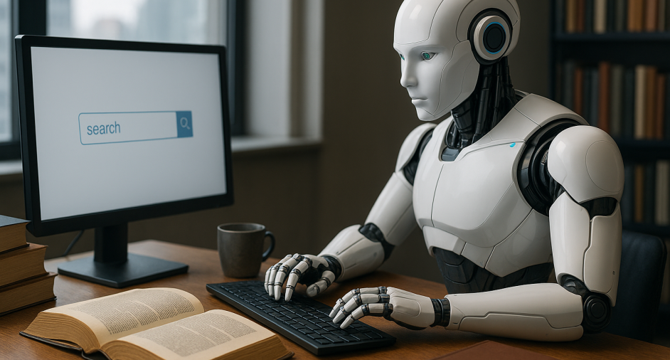
Image Credit: Unite
How Good Are AI Agents at Real Research? Inside the Deep Research Bench Report
- Large Language Models (LLMs) are improving in assisting with deep research tasks, going beyond simple facts to multi-step reasoning and data synthesis.
- The Deep Research Bench (DRB) benchmark evaluates AI agents' performance on complex research tasks with 89 distinct challenges across 8 categories.
- The ReAct architecture and RetroSearch dataset ensure consistency in evaluating agent performance on web-based research tasks.
- OpenAI's o3 emerged as the top performer on the DRB, highlighting newer 'thinking-enabled' models' superiority over older ones.
- Challenges faced by AI agents include forgetfulness, repetitive tool use, poor query crafting, premature conclusions, and lack of cross-checking.
- Toolless agents relying solely on internal training data performed well on certain tasks but struggled with tasks requiring external information.
- While AI agents can simulate knowledge well, they still lag behind human researchers in strategic planning, adaptation, and nuanced reasoning.
- The DRB report emphasizes the importance of evaluating AI agents' reasoning, tool use, memory, and adaptation for real-world research applications.
- FutureSearch tools like DRB are crucial for assessing the effectiveness of AI models in complex research tasks where reasoning and real-time information are essential.
- LLMs have the potential to enhance knowledge work but still have room for improvement in emulating human-like research capabilities.
Read Full Article
15 Likes
Unite
144
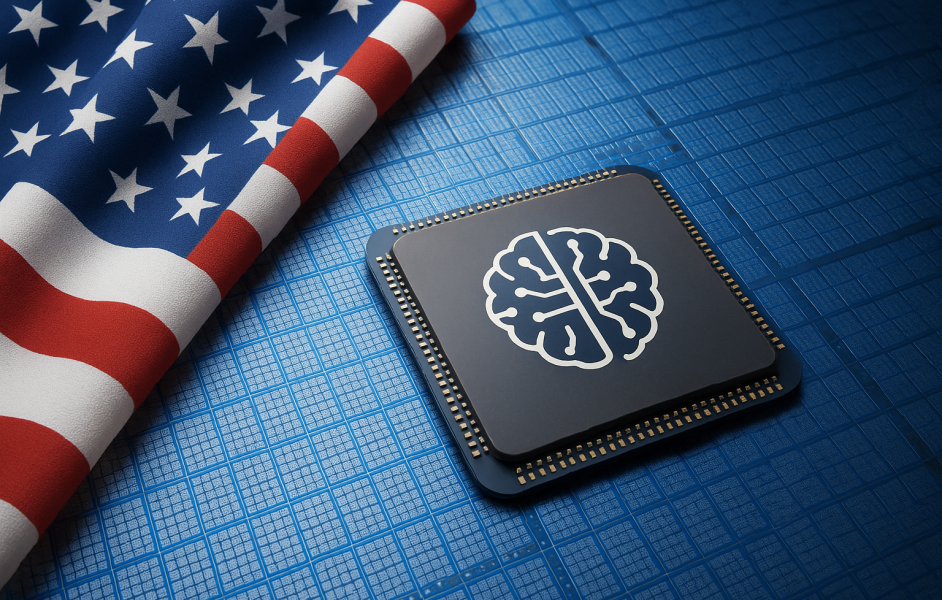
Image Credit: Unite
Strengthening U.S. Chip Manufacturing – The Key to AI Leadership
- The looming threat of U.S. import tariffs on semiconductors may not come to fruition due to potential supply chain disruptions, akin to those experienced during COVID-19.
- It is crucial for the U.S. to enhance its semiconductor manufacturing resilience for economic and national security reasons, especially in the realm of artificial intelligence (AI) leadership.
- Semiconductor technology powers AI model training servers, with AI-related chips projected to constitute 19% of the global semiconductor market by the end of the year.
- Reducing reliance on foreign semiconductor supply chains can bolster economic and national security, driving the bipartisan bill 'Securing Semiconductor Supply Chains Act of 2025.'
- Addressing concerns over potential semiconductor shortages, the U.S. must innovate in chip design to meet the escalating demand for applications like AI, autonomous vehicles, and robotics.
- Advancements in materials discovery like direct local atomic layer processing can revolutionize semiconductor manufacturing by accelerating design cycles and reducing environmental impact.
- By fostering collaboration between universities, startups, and R&D firms, the U.S. can enhance semiconductor manufacturing domestically while preserving environmental and human health.
- The relationship between AI and semiconductors is interdependent, with AI aiding in materials discovery and semiconductor advancement for improved computational power and efficiency.
- AI-driven materials design and new manufacturing techniques hold the potential to revolutionize semiconductor production, accelerating breakthroughs and maintaining U.S. technological leadership in AI.
- Incorporating direct atomic layer processing and AI can drive faster materials development and innovation, positioning the U.S. at the forefront of semiconductor technology within its borders.
Read Full Article
8 Likes
For uninterrupted reading, download the app